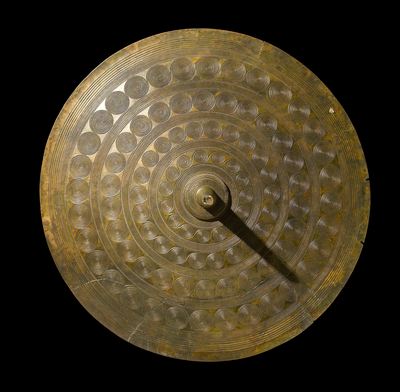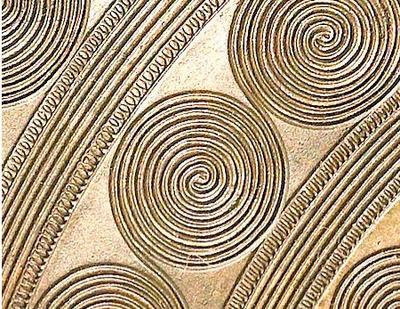The belt plate from Langstrup
In 1879 peat was cut from Langstrup bog near Asminderød not far from Fredensborg in North Zealand. One of the finest founds from the Bronze Age came to light. It was the largest and most perfect belt plate, the belt plate from Langstrup. Only lucky circumstances saved the discovery, which they thought to be “junk”. Today you can see the belt plate on the 200 krone banknotes.
The bog at Langstrup belonged to farmer Hans Børgesen, but it was his servant who found the belt plate in the bog. Together with the belt plate, he found a knife with a beautiful decorated handle and two large spiral rings, all in bronze. As it happened the local policeman passed the farm. He later wrote in a letter to the National Museum, that the objects “lay among other pieces of junk." The following year, the National Museum bought the discovery from a local antique shop, who had apparently bought it from the farmer.
Back then finds of bronze objects was not covered by the treasure trove rules, and the National Museum had to buy them. Unfortunately we do not know the exact place of the findings. The local policeman wrote further that "The owner was so indifferent to these things that he had not bothered to show the place of finding, and (that) the servant who made the findings left the farm shortly after, and (it) is not known whither fate led him." A poetic way of writing that they had no idea what had become of servant.

The belt plate from Langstrup decorate the new 200Kroner banknotes.


